QUINCY − The cabin remains are barely visible, now that the leaves have grown in. But head for the right place, just off Ricciuti Drive, and you’ll find some fascinating (and forgotten) local history near the top of the former Quincy quarries.
Standing near the Quarry Hills recreation area with a partial view across Quincy Bay, you can imagine how much young people must have loved getting away from it all on summer evenings nearly a century ago.
This is where The Oak cabin, a social club for mostly West Quincy residents, was located.
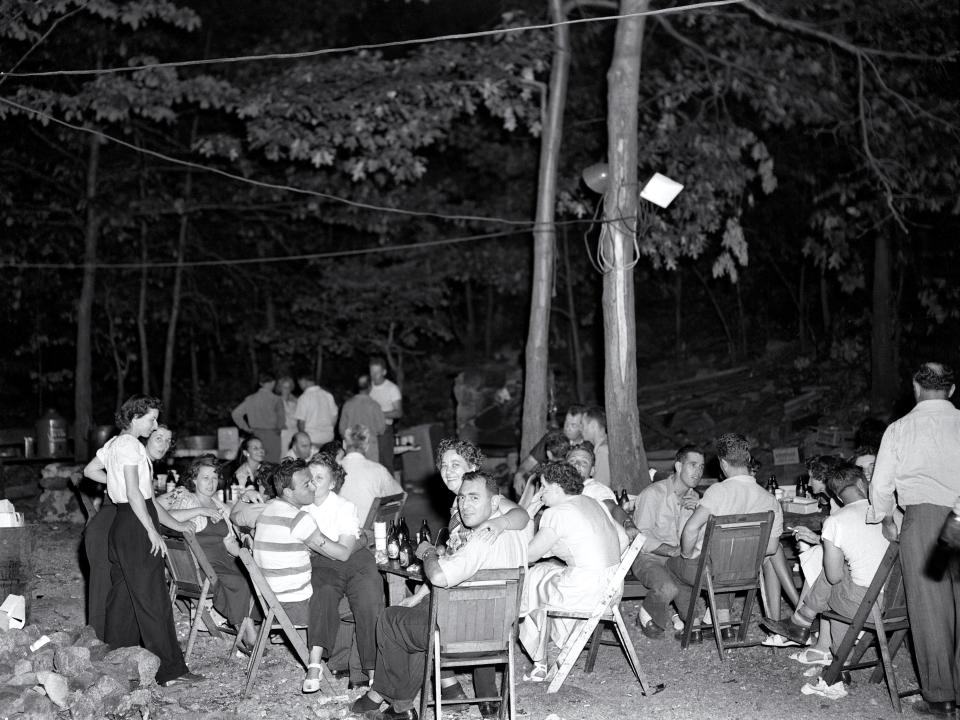
Near the soccer fields off Ricciuti Drive, you’ll see a large water tower. On the tower’s south side, behind a fence, are the remains of two stone walls. When the walls were discovered in the 1990s, a state report suggested they might have been a relic of Quincy’s iconic granite industry − perhaps a supervisor’s office at the former Dean and Horrigan Quarry.
Then Tom Bonomi, whose family has lived in West Quincy for three generations, happened to see the report and set the record straight.
Walking with Uncle Frank in the quarries with stories
“This was The Oak, a social club in its day,” Bonomi said. “It didn’t have anything to do with the granite industry. When I was a kid, I used to go walking up there all the time with my uncle Frank.”
Frank Bonomi would tell his nephew stories about the good times two generations had up there at the cabin, on the edge of the Blue Hills, surrounded by woods and abandoned quarries.
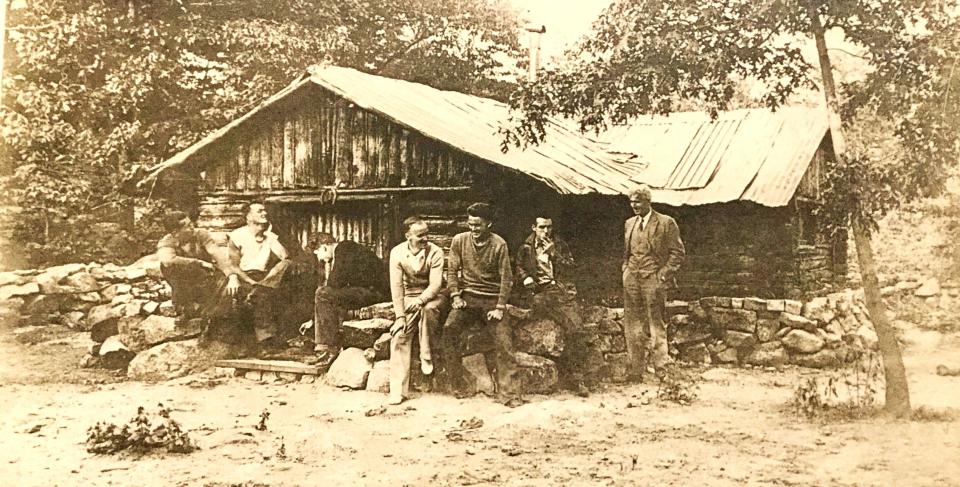

Before families routinely went to Cape Cod or New Hampshire in the summer, neighborhood social clubs like The Oak cabin were the place to be.
The Oak was very close to becoming a piece of lost history until Bonomi tied the pieces together.
His father, John D. Bonomi, had become a photographer after serving in the Army in World War II. He had left behind a collection of 50 4-by-5-inch negatives he had taken in the summer of 1950. Most were of parties, or other social gatherings, up at The Oak. Tom found them in the basement darkroom and showed them to Dana C. Smith, a retired accountant and photographer.
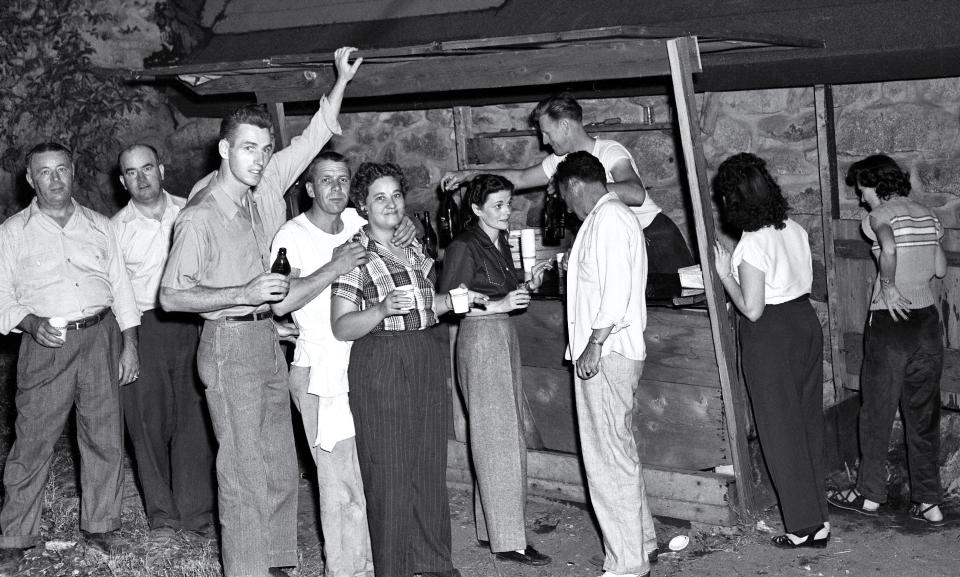

The negatives had been taken with a 1940s-era Speed Graphic camera. Smith used his scanning software to clean up all the negatives; he sharpened the contrast and removed blemishes.
Just amazing what a scanner can find in a negative
“It’s amazing what details the scanner gets out of these old negatives,” Smith said. His favorites were taken at daytime gatherings at the cabin when children were there. The photos show family parties with playpens for the babies, the outside bar for the adults, music, and food being cooked on the outdoor fireplace.
Tom Bonomi, 70, recently gave all 50 negatives, called the Oak Cabin Collection, to the local history and genealogy collection at The Thomas Crane Public Library.
“When I look at the photos, I see a generation that has just survived a world war and is getting on with building a new life, raising families and saving for their first homes. At least that’s how I see my family.
“They had no cars and didn’t go away for vacation, so the cabin was a sort of retreat.”
The story Tom tells about the photographs begins in 1935, when a half dozen West Quincy youths held a dinner for local newspaper reporters and a city councilor in the cabin they recently had built in the woods up in the quarries.
They had a real ‘he-man dinner’ in the Quincy woods in 1935
The social event was reported on Page 1 in the June 5, 1935, edition of the Quincy Patriot Ledger with the headline “Boys Build North Woods Cabin With Expense of Only 75 Cents.” A second headline read: “Reporters Guests at Dinner at The Oak; Constructed Logs Hewn from Forest in West Quincy.”
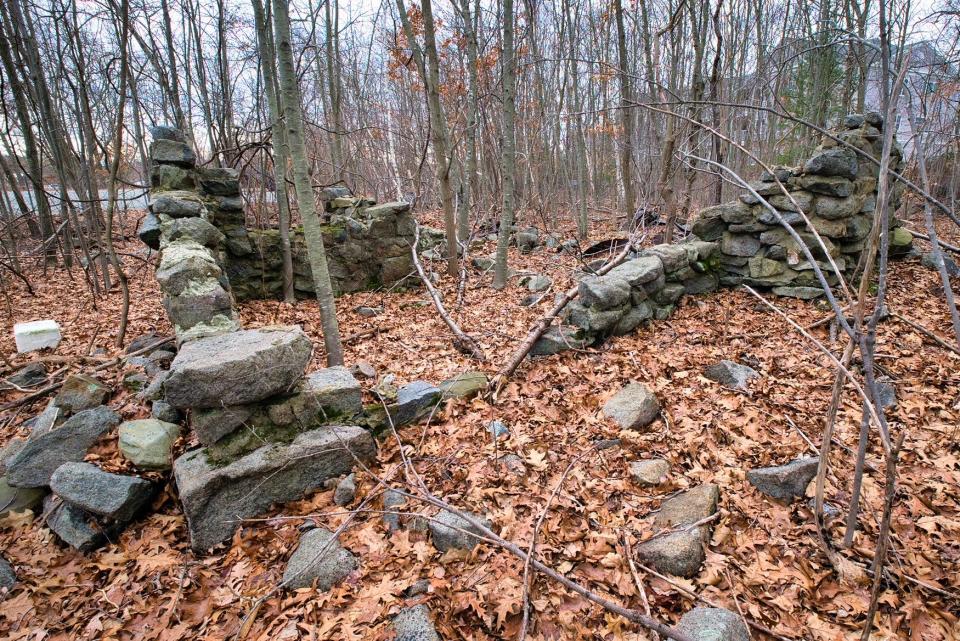

The Ledger article further reported that the “he-man dinner” was served by a group of youths in the dense woods “not far from the top of Breakneck Hill, the highest point in West Quincy. “
The cabin was 40 feet wide and 15 feet long and described “as solid as the oak used to build it and completely waterproof.” The report continued that the cabin only cost the youths 75 cents because the wood was free and the only money needed was for the spikes.


The boys rented the land the cabin was on for $1 a year from a landlord who believed in the value of the outdoors life.
The reporters had abandoned their cars near a pheasant farm near Forest Avenue. The cabin was described as far from any homes. The reporters followed a trail through thickets up and down hills, led by City Councilor Neil McDonald, who said he was as proud of the boys as if they were his own sons.
The reporters were welcomed to a long table with a choice of rare roast beef, green beans, mashed potato, apple pie, strawberry shortcake and coffee. The youths were “accomplished chefs” and “the vittles” were bountiful and quickly consumed.
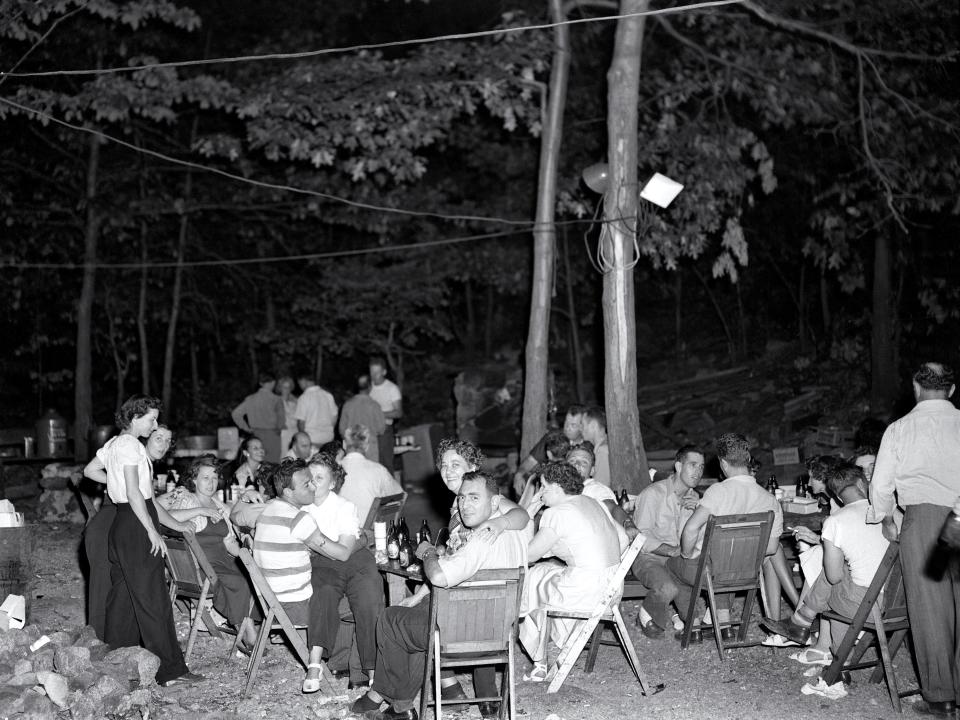

While most campers in that era built shacks of clapboards and barrel staves, the newspaper said, “this cabin is substantial enough to suit the most critical of woodsmen.” The walls were of logs in their natural state 5 to 6 inches thick. The floor was of solid planking. The roof of heavy metal was taken from a dismantled garage and the only “modern” touch.
Rain pelted on the roof and they enjoyed roast beef
Inside was a cook stove, a heating stove, four wooden bunks, tables, chairs, a moose head, stuffed birds and other decorations.
“It is built to withstand the most rigorous weather,” the article said. “It is reinforced to a height of about three feet on the outside by stones and soil. It would remain warm and cozy inside even though a blizzard were raging outside.”
During the reporters’ dinner, in fact, rain pelted the rooftop, but all was dry inside.
The youths were listed as Joseph Pelton, 23; the Murphy brothers, William, 23, and Edward, 19; Tom Little, 19; Rennie Comoletti, 18; and Roger Bonomi, 18, another uncle of Tom Bonomi.
A “string orchestra” of four men with banjos and guitars entertained after dinner. The seven visitors included reporter Dick LaBreque, who later worked on The Patriot Ledger’s copy desk in the 1960s, and Percy Lane, then secretary to Acting Mayor Leo Mullin, who also wrote for The Patriot Ledger.
Tom Bonomi said there was a full bar out back and an outside fireplace, where clambakes were done.
The property at that time was owned by the Atlas Powder Co., Tom Bonomi said.
Just two years later, in 1937, the enterprising youths rebuilt the original log cabin with stone.
“Many of the boys had learned how to do masonry after spending some time working in the Civilian Conservation Corps in the Blue Hills,” Bonomi said. They turned their new talents to The Oak.
Do you know of other social clubs of the period?
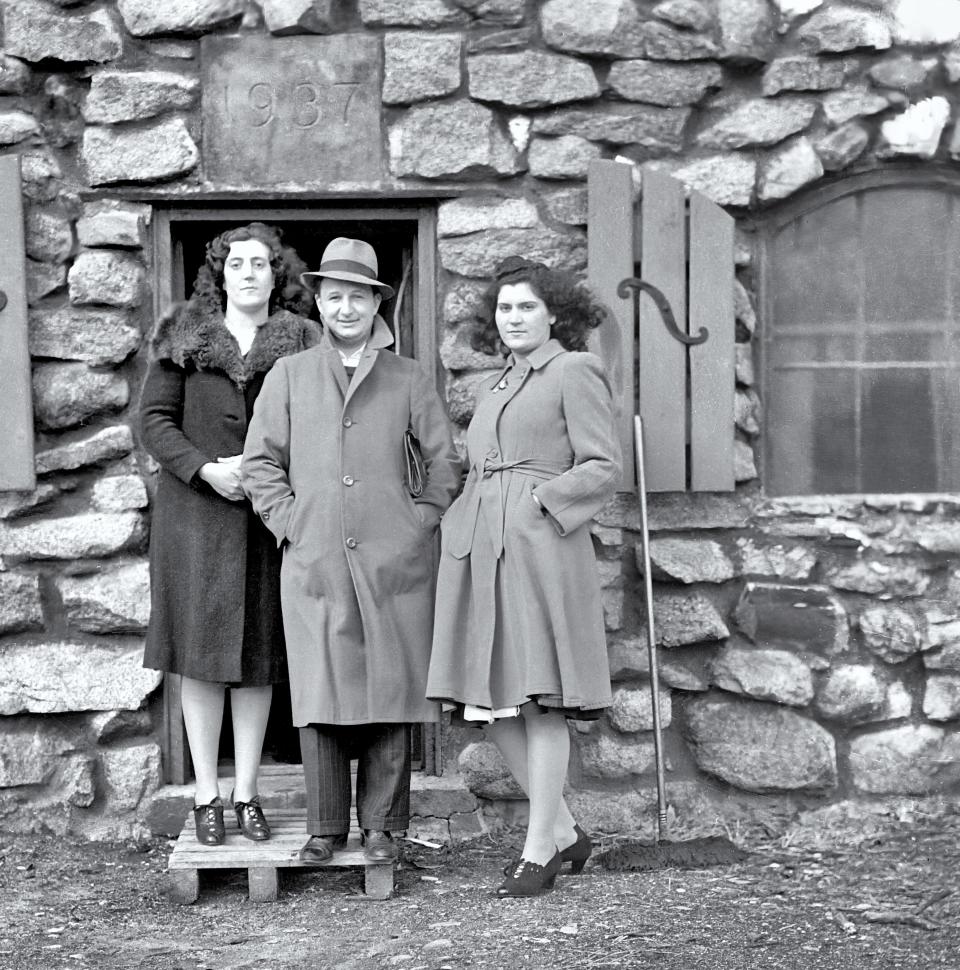

Tom Bonomi believes The Oak was just one of the early social clubs of that period. When the United States entered World War II, many of the young men either went off to fight in the war or worked at the Fore River shipyard. After the war, the cabin once again became a social club and the families held cookouts, clambakes and reunions for friends and growing families.
Sometime after 1950, the cabin was destroyed by fire and was not rebuilt.
The Oak families then had their reunions and celebrations at the Morrisette American Legion Post in West Quincy.
Bonomi is especially proud of his contribution to preserving the legacy of The Oak. He discovered an intensive archaeological survey that was conducted in 1997 in West Quincy before the Quarry Hills Recreation Complex was developed off Ricciuti Drive. The site contains the Granite Links Golf Course and sports fields.
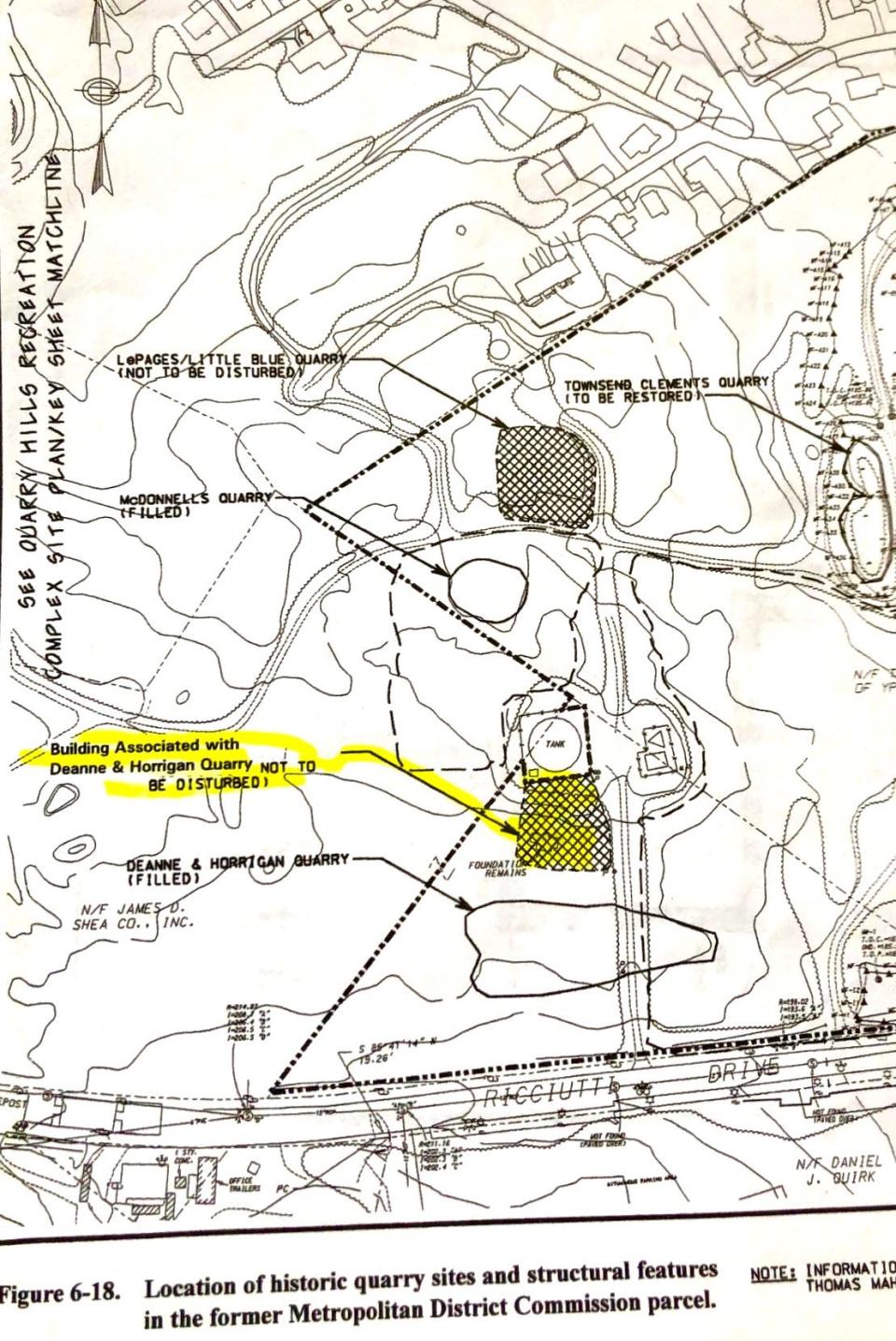

Bonomi said the survey covered 400 acres, and all unknown structures that were found in or on the ground had to be recorded and preserved for future identification. There was a possibility they might be related to the quarry industry and that was important Quincy history.
When the stone remains of The Oak cabin were found, the team believed they were part of the quarry industry. They misidentified the cabin as the superintendent’s house, and they decided to preserve the site.
Bonomi is excited to think about families that can now view the photos at the library and perhaps find their grandfathers and grandmothers.
Quincy library has new local history collection
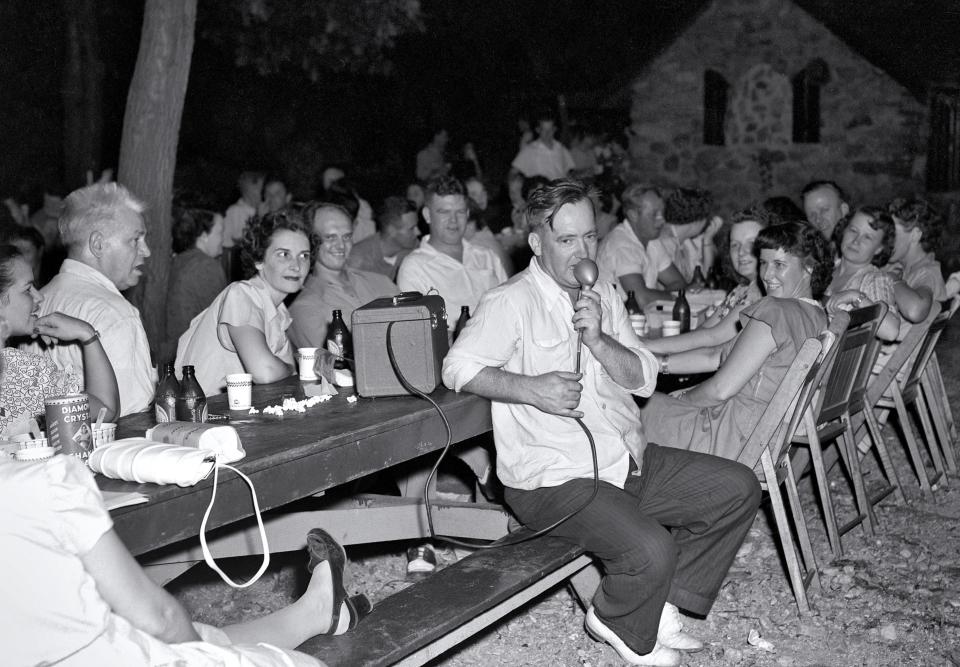

Just as excited as Tom Bonomi by all this is Margaret Lagerstedt, archives and special collections coordinator at The Thomas Crane Public Library.
“We are super-appreciative to have these photos,” Lagerstedt said.
The library will have prints of the original negatives plus digital copies. The library’s archivist will be cataloguing the photos and hopes to have them available to the public as soon as possible.
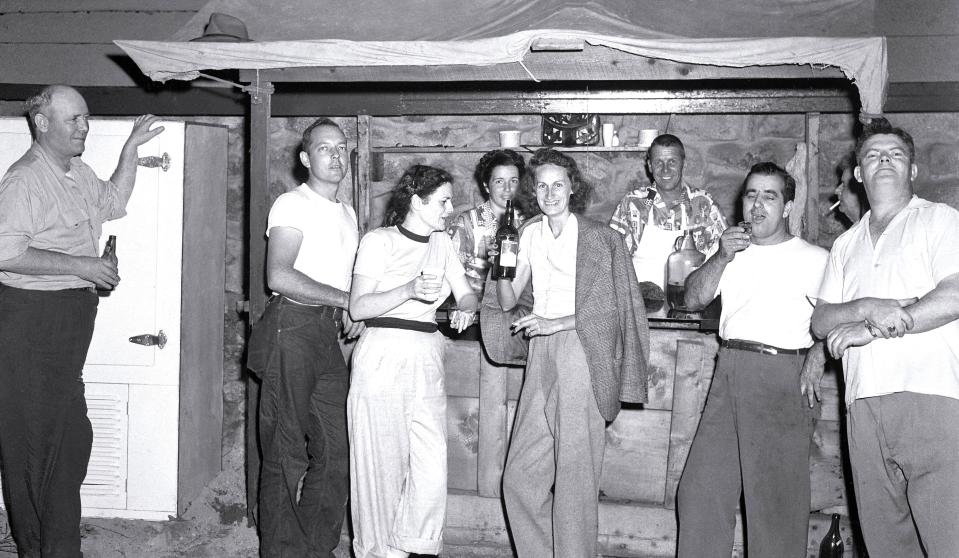

Tom Bonomi said he hopes other people will contribute to the Thomas Crane Library’s local history collection.
“So much of this type of history ends up in the trash when people die and the heirs clean out a house,” he said.
“Just working-class Quincy families. I would be interested to know about other ‘clubs’ like this in Quincy from that time period.”
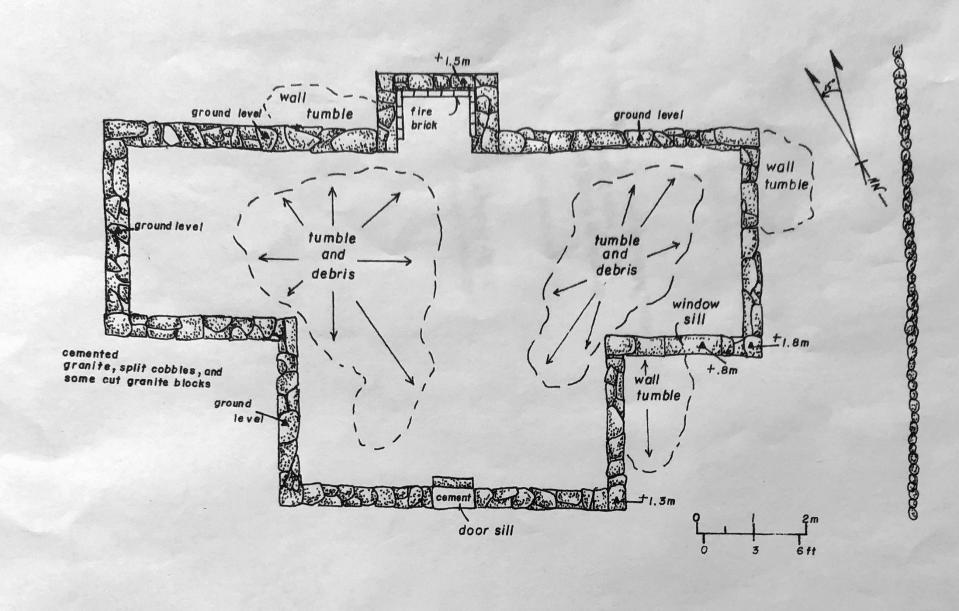

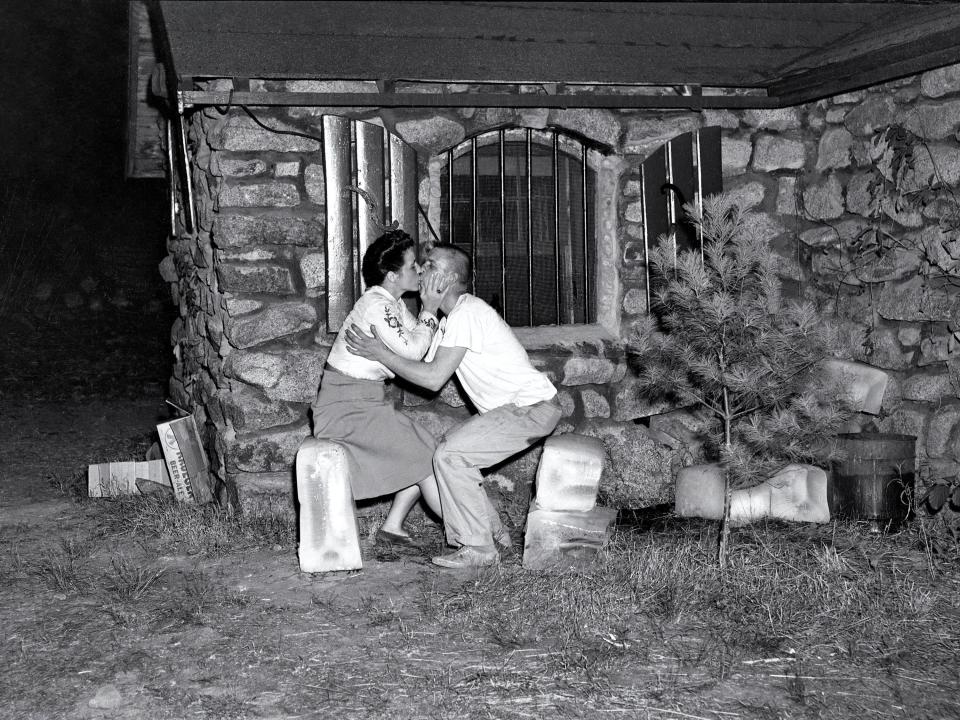

Smith, a retired accountant, has also posted photos on the Quincy Today Yesterday Facebook page.
The Oak Cabin collection of all 50 photos is on his Flicker account, available for viewing.
Reach Sue Scheible at [email protected].
This article originally appeared on The Patriot Ledger: The Oak cabin’s ruins in the Quincy quarries: Finding lost history
Source Agencies


